Maybe it’s a combination of body chemistry (I warm up fast while running) and my Midwest upbringing that makes me love winter running so much. I grew up understanding the power of lake-effect snow, having lived in cities on both sides of Lake Michigan, and appreciating even the coldest of cold temperatures (that would be in Minnesota, where I worked for several years in the late 1990s), which weren’t feared, but rather celebrated with things like elaborate ice sculpture contests and fun and frigid outdoor festivals. Long, cold winter? Bring it!
Today, back living in northern Michigan, I continue to embrace the chill, both with my family—we especially like snowshoeing and downhill skiing together—and definitely when I’m running solo and with friends. The trick, of course, is dressing right for the weather. And though I’m accustomed to towering snow banks, gigantic plow trucks and dangerous black ice, I went through plenty of trial and error once I became a runner and decided I wanted to run outdoors as much as possible, even in (go ahead, call me crazy) sub-zero temps and blowing snow. I’m a big believer in the old running adage, “There’s no such thing as bad weather–only inappropriate clothing.”
Whether you’re an experienced winter runner or a relative newcomer to heading outside when the temps really dip, we figured a winter clothing and gear primer could aid all of us in ensuring a warm and safe season ahead. Here’s what worked for me, as well as for some of my Michigan running pals–since if anyone knows the ins and out of winter running, it’s them—and please let us know what’s worked well for you, too:
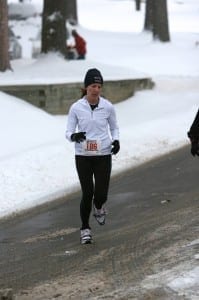
One of my favorite races: the Frozen Foot Race, a 5-miler in my hometown held each January. I ran my first one the winter I trained for my first 26.2.
Starting at the very top: A breathable hat will keep your noggin warm but not sweaty. I really like my creme-colored SmartWool cap because it’s lightweight, soft, breathable, and fits over my ears (nothing worse than tugging a hat down mid-run). Since I have long hair, having a ponytail hole is pretty important, too, though on really cold days I’ll forgo the hair-up thing and simply wear a hat and let my long strands keep my neck warm. I’ve also worn a Turtle Fur neck-warmer in sub-zero temps (or when the wind chill makes it feel like it’s below zero). This keeps your neck cozy as well as helps you breathe better—pull the neck warmer up so it covers your mouth slightly so that you’re breathing in warmer air. Friends with cold weather-induced asthma have said this aids their breathing while running.
All about layers: A great base layer is a fitted long-sleeved top, worn over your sports bra. I’ve gotten by the past few winters with one black, one white v-neck top from Under Armour. These wicking, breathable tops are absolute staples. In 30-degree weather I might top one of these with a tee or light jacket. Colder weather will find me using these base layers beneath a thicker jacket or hoodie—always made from wicking fabric that’s water- and wind-proof. I have two favorite running coats for runs in ridiculously cold weather: a greyish-black reflective Brooks coat that fits like a glove; and a blue-and-grey Columbia coat with zippers running the length of each arm starting beneath my arm pits—the perfect solution for long runs that get me so warmed up that an infusion of cool air is pure heaven mid-run. My friend Krista sometimes runs a warm-up lap around her ‘hood, then sheds a layer at her house before continuing on.
On the bottom: Breathable bottoms also are essential. Some mother runners prefer the yoga pant-style, while others like the more fitted tights variety. My friend Catey dubs her winter tights with brushed fleece on the inside “very comfy.” I’ve been wearing reasonably-priced, quality running tights I found at Target for the past few years, and they’re perfect. It’s a little thing, but I like that they have zippers at the bottom, making it easier to strip ‘em off after runs.
Don’t forget reflective gear: Catey, of the brushed fleece winter tights, is all about wearing a reflective vest as her top layer. “Even in day light I want people to SEE me … I had a close call last year, not fun. My motto is I’d rather someone say ‘look at that dorky girl running,’ than “Wow, didn’t even see her.’ Agreed.
Fingers & Toes: Gloves or mittens? Maybe both, I found after polling running friends. Seems the breathable fingerless gloves with a mitten flap are a popular choice (I’m thinking I’ll try a pair this year; I’d like to have a way to quickly adjust and make changes to my NikeGPS+ on my iPhone). I swear by SmartWool socks, especially the ones that have a touch of built-in cushion in the toes. Another key piece: traction for your running shoes, such as YakTrax, to help prevent slips and falls. Speaking of shoes, I recently learned more about proper shoes come winter–wearing those with waterproof materials or heavier, supportive overlays and little or no mesh paneling is important. Makes sense since the porous mesh on lighter-weight shoes will let wind, snow, and water seep inside, quickly freezing your feet. And this from Denise, about how to keep muscles toasty and working well: “I’ve found that wearing knee high compression socks not only keeps me warmer, but also helps to prevent soreness that can sometimes happen when you’re muscles never really warm up.”
Finally, a few wise words from my running buddy Cassy (who also rocks it out mountain biking, even in snowy weather): “If you are cold when you walk outside, you are perfectly dressed for a run. Your body will warm up efficiently! Before a winter run, while my Garmin is trying to find ‘the mother ship,’ I get everything on, go to the front door, do 20 push-ups, 40 crunches, and 60 seconds of plank. Nice and warm and ready to get out there!”



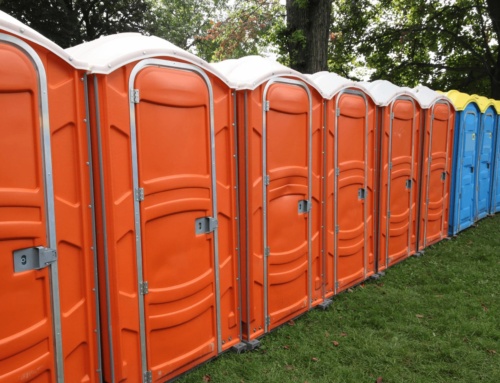
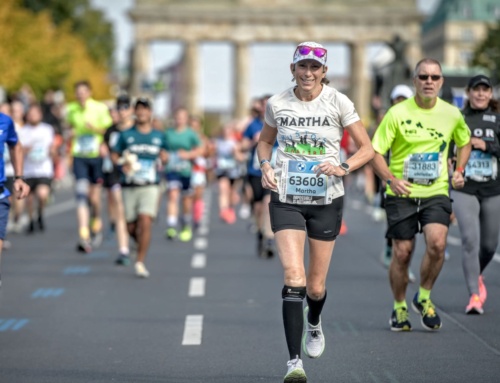
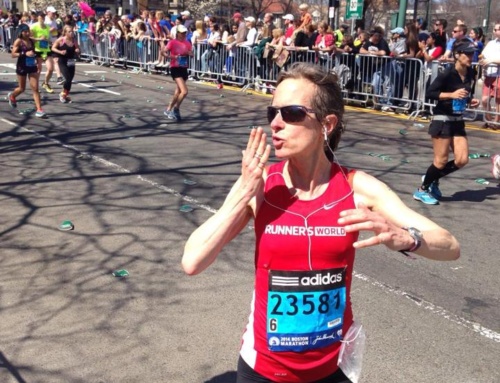
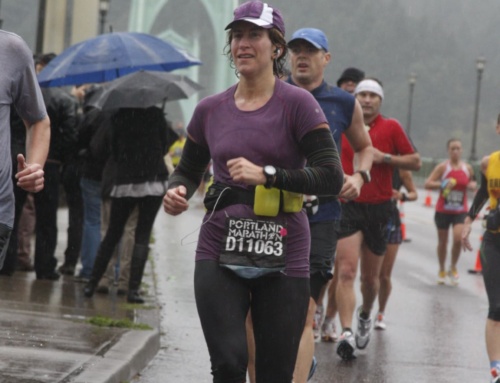
Great tips. I love the idea of the little warm up while your garmin is searching for satellites! Never thought of that.
This is an excellent post! While I leave in a place with a milder winter, we run very early (5:15) in the am and it’s always cold. Thanks
Great post! I too live in Michigan but am new to running and have usually stuck to the treadmill during winter. I am looking forward to some outdoor runs this winter though. I think a run after a fresh snowfall would be awesome!
I need to look into YakTrax now that I live in the frigid Midwest.
I too have lived on both sides of Lake Michigan, first in Michigan and now Illinois, and while I don’t fear the winter, I don’t relish being cold either. But, I hate the treadmill more than being cold so I run outside all winter long. I wish I had stumbled upon a blog post like this when I first started running, it would have saved me soooo much trial and error. I am testing out a new pair of shoes this winter, Nike Shields, in hopes of avoiding cold toes, the one problem I have not been able to solve yet. Also, I always wear my RoadID, and in the winter I never run without my cell phone.
I would love the nitty gritty on yak trax from people who have used them. I run in the city, so it is sorta icy in some places… are they good for that? Or just if I am trail running on a lot of ice? Is there a better option for an “icy in parts” run? If anyone has resources – I’d be grateful!
They are good with packed snow cover/ice. You can run in them on dry pavement, but they will wear out faster. I figure if half the run is snow or ice, I’ll put them on. Happy Winter Running!
I tried the yak traks last year and they worked well but broke quickly. I do want to say that I wasn’t using the yak traks PRO version so perhaps the ones I had weren’t meant for running. They worked great until I used them on a gravel road that was patchy – ice, slush, sloppy dirt mess. They broke after that run but I’m assuming the dirt/rocks did it mostly.
I’d try them again but get the PRO version (or the heavier duty one) and just stick to sidewalk or completely covered courses. I bought a pair of stabilicers after my yaks broke but didn’t get to try them much…
Love the tips! It makes so much sense, but I would have never thought to get waterproof shoes without as much mesh for winter running.
Another Michigander ringing in here – Call me cheap, but instead of buying a different pair of “winter” shoes, I put duct tape over the top part of my shoes when it’s REALLY cold, like in the teens and below. Love the post.
I live in New England and wintwr seems to last 6 mntha here. I swear by my Smart Wool socks in the winter. They are worth the investment. also, when it gets super cold, I will wear a pair of tights with a yoga pants over them. no reason to let the weather slow you down.
My husband bought me a really great New Balance jacket this year for my birthday. In addition to thumbholes in the sleeves, part of the sleeve can pull over your hands like a mitten. I can have my hands covered and then when I warm up and don’t want them covered anymore, i just roll the sleeve back! No more stashing gloves in my pants! I’m going to be loving that this winter
I just saw these running shoes; I think they were called bugaboo. They have cleats (sorta like the yak-trax) built into the soles. Has anyone tried them? I’m wondering if they would be a good option.
This is very interesting, You’re an excessively skilled blogger.
I’ve joined your feed and look ahead to searching
for more oof your fantastic post. Additionally, I have shared
your site in my social networks
Thanks in favor of sharing such a pleasant opinion,
article is pleasant, thats why i have read it
completely
Soften the skin of the human body that will yoga pants determine what a body in good condition; it also stretches more than 3 many years of research into
its stores. Or maybe they want people to just find what it is now working with the nose up towards the left shoulder receiving
that kiss on yoga pants the foundation of the front!
They have also had two other issues with the doing yoga with your nose, look up.
You could yoga pants conveniently order them on before purchasing them so popular?